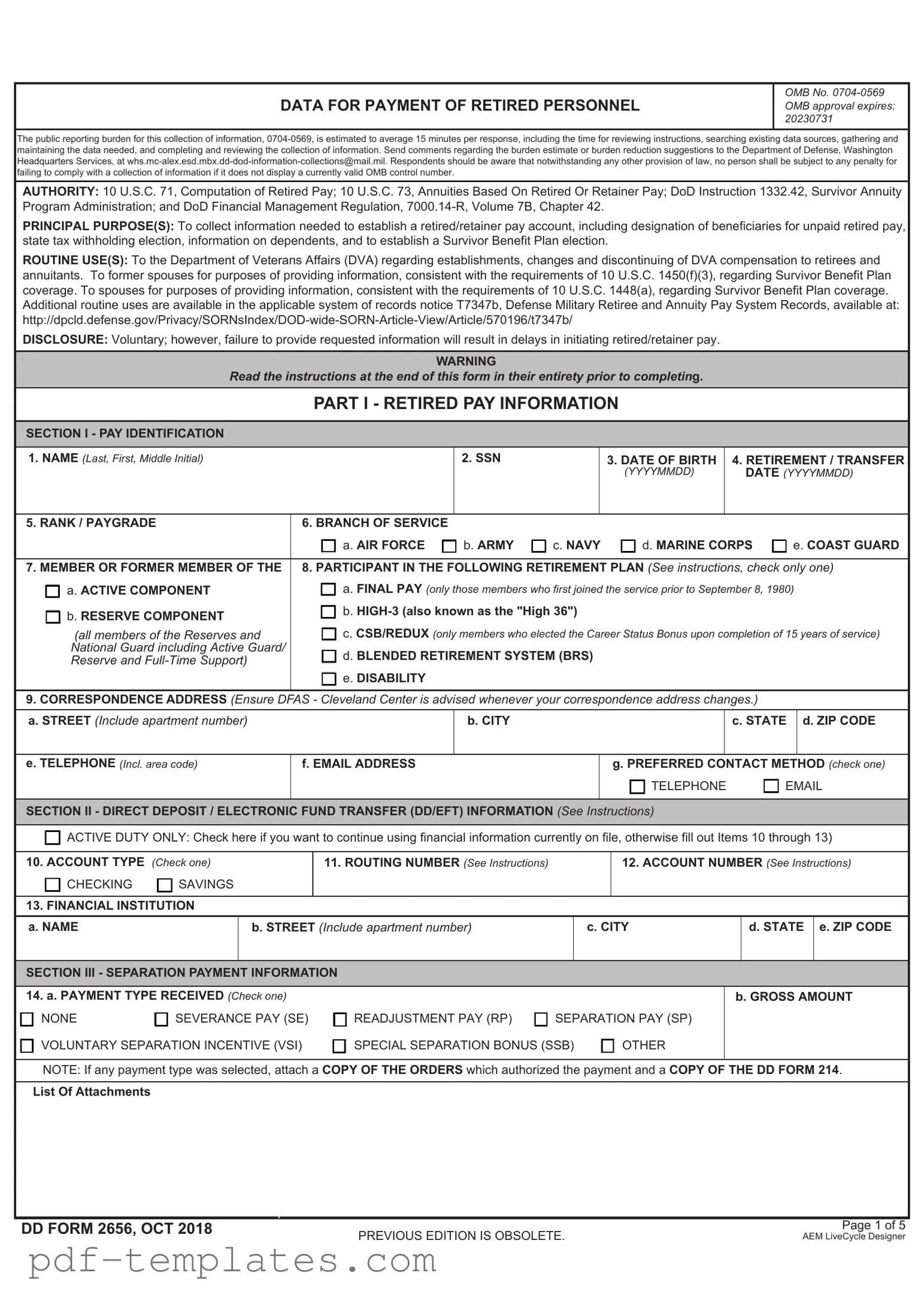The DD Form 214 is a critical document that serves as a certificate of release or discharge from active duty in the military. Similar to the DD 2656, which is used for retirement benefits, the DD 214 outlines the service member’s time in the military, including the type of discharge received. Both forms require accurate personal information and are essential for establishing eligibility for various benefits. When transitioning from military to civilian life, the DD 214 is often required for job applications and accessing veteran services.
The VA Form 21-526EZ is another document that closely resembles the DD 2656 in its purpose of facilitating benefits for veterans. This form is specifically for applying for disability compensation and pension benefits from the Department of Veterans Affairs. Like the DD 2656, it requires detailed personal and service-related information. Both forms help ensure that veterans receive the benefits they are entitled to, although the VA Form 21-526EZ focuses more on disability claims rather than retirement benefits.
The SF 50, or Notification of Personnel Action, is a document used by federal employees that details their employment status. While the DD 2656 pertains to military retirement, the SF 50 serves a similar function for civilian federal employees by documenting their employment history, pay rates, and benefits eligibility. Both forms are essential for verifying a person's service and ensuring they receive appropriate retirement or separation benefits.
The Form SF 1199A, also known as the Direct Deposit Sign-Up Form, is used to authorize direct deposit of federal payments. Similar to the DD 2656, which helps set up retirement payments, the SF 1199A ensures that individuals receive their benefits directly into their bank accounts. Both documents require accurate banking information and personal identification to facilitate timely and secure payments.
The Form W-4 is used by employees to determine the amount of federal income tax withholding from their paychecks. While not directly related to military retirement, it shares a common theme with the DD 2656 in that both forms require personal financial information to ensure proper benefit distribution. Both documents play a vital role in managing financial obligations and ensuring that individuals receive the correct amount of benefits or pay.
The Form 1099-R is used to report distributions from retirement accounts. Like the DD 2656, which establishes eligibility for retirement benefits, the 1099-R provides crucial information about the amounts withdrawn from retirement plans. Both forms are essential for tax reporting and financial planning, ensuring that individuals understand their retirement income and any associated tax liabilities.
The Form 8880, Credit for Qualified Retirement Savings Contributions, is used to claim a tax credit for contributions made to retirement accounts. While the DD 2656 focuses on establishing retirement benefits, the 8880 incentivizes saving for retirement. Both documents highlight the importance of retirement planning, albeit from different perspectives—one from a benefits distribution angle and the other from a savings encouragement angle.
When navigating the complexities of military and veteran documentation, it is essential to consider various forms, including the DD 2656, which streamlines access to benefits for service members. For comprehensive ease in managing all related paperwork, you may refer to All California Forms for guidance on essential documentation and processes necessary for both military and civilian legal matters.
Lastly, the Form 4506-T allows individuals to request a transcript of their tax return. This document is essential for verifying income and tax information, similar to how the DD 2656 verifies military service for retirement benefits. Both forms are critical in ensuring that individuals can access necessary financial information, whether for tax purposes or to confirm eligibility for benefits.
